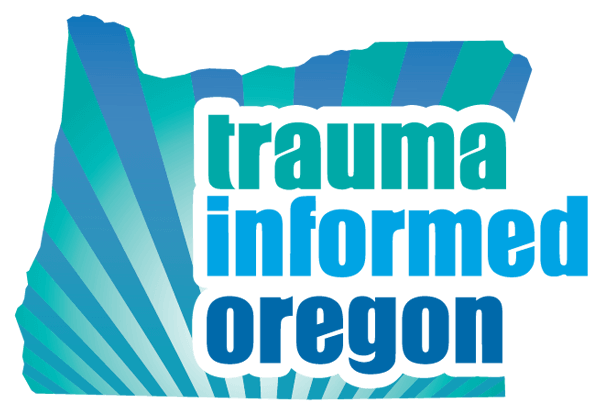About Trauma Informed Oregon
 Trauma Informed Oregon’s Mission
Trauma Informed Oregon’s Mission
Trauma Informed Oregon is a statewide collaborative aimed at preventing and ameliorating the impact of adverse experiences on children, adults, and families. Trauma Informed Oregon works in partnership with providers, individuals with lived experience, and families to promote and sustain trauma informed policies and practices across physical, mental, and behavioral health systems and to disseminate promising strategies to support wellness and resilience.
 History and Purpose
History and Purpose
In June of 2014, the Oregon Health Authority, Health Systems Division (formerly Addictions and Mental Health Division), contracted with Portland State University, in partnership with Oregon Health & Science University (OHSU) and the Oregon Pediatric Society (OPS), to initiate a statewide collaboration to promote and sustain trauma informed care across child- and family-serving systems. In July of 2015, the scope of this collaboration was expanded to include adult serving behavioral health systems. Trauma Informed Oregon (TIO) was created in recognition of the impact that adverse experiences in childhood have on long-term health outcomes and represents a commitment at the state level to promote prevention and to bring policies and practices into better alignment with the principles of trauma informed care.
Trauma Informed Oregon serves as a centralized source of information and resources and coordinates and provides training for healthcare and related systems. Trauma Informed Oregon works with state agencies, state and local providers, communities, family and youth organizations, and diverse constituents to bring many voices and perspectives to the table to learn from one another and to advocate for informed policies and practices to promote healing and support wellbeing for all of Oregon’s children, adults, and families.
Background
Complex and prolonged trauma can have profound effects on physical, mental and behavioral health outcomes across the lifespan. The publication of ACE research beginning in 1998 brought the impact of early childhood trauma into public awareness and resulted in greater national attention to supportive services needed by young children who have experienced adverse and traumatic events. More recently, promising practices have begun to emerge that promise to buffer children, adults and families from the effects of adverse experiences and to prevent their most negative consequences.
In Oregon, efforts to recognize and respond to the impact of trauma have emerged across multiple service systems. In 2006, the Addiction and Mental Health Division (then a part of the Department of Human Services) wrote the first state policy on trauma.
In 2012, the Children’s System Advisory Committee (CSAC, advisory to Addiction and Mental Health, AMH) identified the impact of trauma on children and youth with mental health challenges as a priority in its annual work plan. The resulting workgroup, composed of state leaders, providers, family members of children with emotional challenges and youth with lived experience in the mental health system, prepared and circulated a white paper on trauma informed care followed by a proposed state policy. The white paper and its recommendations were instrumental in the development of the state’s trauma informed care policy.
The advent of healthcare transformation and the integration of physical, mental and behavioral health in Oregon, provides a unique opportunity to change the way trauma and adverse childhood events are perceived and responded to by service providers and the public in general. To this end, TIO was initiated through the child mental health leadership of AMH and CSAC, and made possible by the vision of state legislators.
